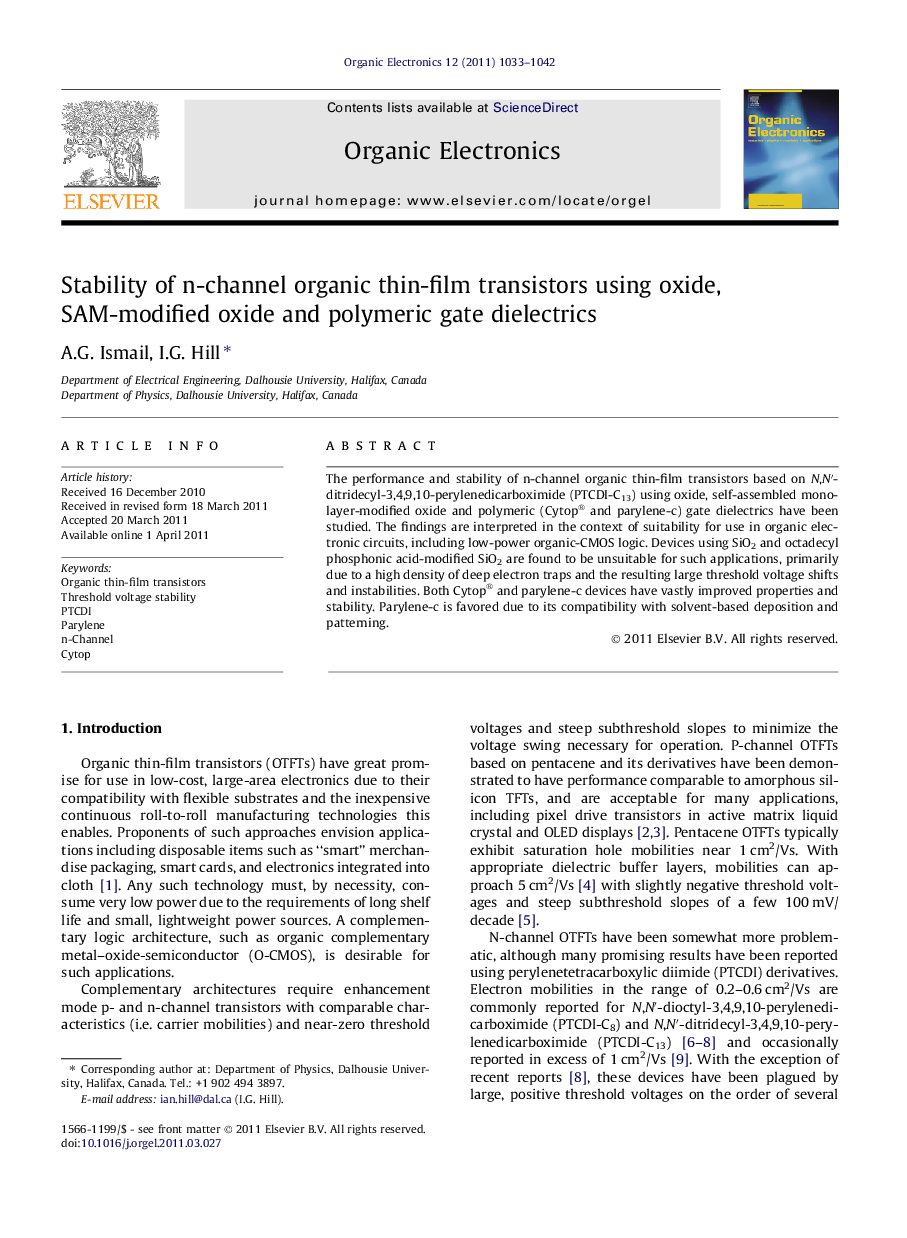| Article ID | Journal | Published Year | Pages | File Type |
|---|---|---|---|---|
| 1267701 | Organic Electronics | 2011 | 10 Pages |
The performance and stability of n-channel organic thin-film transistors based on N,N′-ditridecyl-3,4,9,10-perylenedicarboximide (PTCDI-C13) using oxide, self-assembled monolayer-modified oxide and polymeric (Cytop® and parylene-c) gate dielectrics have been studied. The findings are interpreted in the context of suitability for use in organic electronic circuits, including low-power organic-CMOS logic. Devices using SiO2 and octadecyl phosphonic acid-modified SiO2 are found to be unsuitable for such applications, primarily due to a high density of deep electron traps and the resulting large threshold voltage shifts and instabilities. Both Cytop® and parylene-c devices have vastly improved properties and stability. Parylene-c is favored due to its compatibility with solvent-based deposition and patterning.
Graphical abstractThe stability of n-channel OTFTs with a variety of gate dielectrics and gate dielectric treatments are presented. OTFTs fabricated using Cytop and parylene-c gate dielectrics exhibit excellent stability with near-zero threshold voltages and almost no hysteresis.Figure optionsDownload full-size imageDownload as PowerPoint slideHighlights► Comprehensive study of stability in n-channel OTFTs with several dielectrics. ► First report of parylene as a dielectric in n-channel OTFTs. ► Excellent stability of transistors with Cytop and parylene dielectrics. ► Alkyl-SAM terminated SiO2 does not sufficiently eliminate traps.
